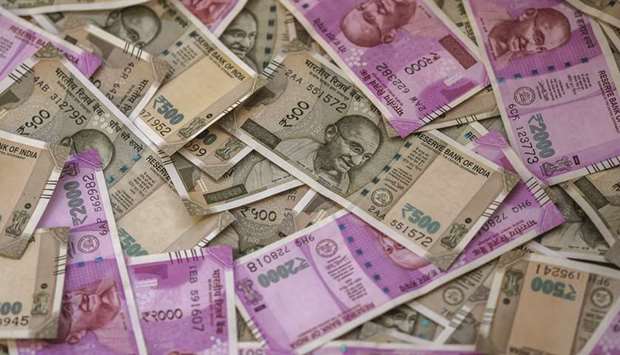India has sufficient “firepower” to deal with the rupee’s decline, Garg said in New Delhi on Friday, referring to the nation’s foreign exchange reserves of more than $400bn.
The rupee hit a record low of 69.0925 on Thursday, and banks including Barclays and DBS Group Holdings are forecasting Asia’s worst-performing currency to slide past 71 by end of the year. The predictions underscore India’s vulnerability to cost of oil, its top import, and boost talk of a second rate hike since June.
Brent crude’s sustained rise since the middle of 2017 has led to a widening of the nation’s trade and current-account deficits. That along with hardening global yields and the Federal Reserve’s policy tightening is likely to see capital flows slow, leading to India’s funding gap widening from the current 2% of gross domestic product.
“With 70 in sight for the rupee, it is very likely that the central bank will hike again in August to contain inflationary pressures,” said Priyanka Kishore, head of India and Southeast Asia economics at Oxford Economics in Singapore. “They will also intervene to prevent a sharp drop and ensure orderly conditions in the currency market.”
Earlier last month, the RBI raised rates for the first time since 2014, joining emerging economies like Indonesia and Philippines who tightened monetary policy to defend their currencies. The central bank’s position is that it does not target the exchange rate and is mandated to keep inflation within 4% in the medium term.
A spokesman for the Reserve Bank of India declined to comment. A Bloomberg survey shows economists expect the repurchase rate to be increased to 6.5% in the second quarter of 2019, from 6.25% now, while swap markets are pricing in at least two more 25-basis-points-rate increases this year.
Foreign currency non-resident bank deposits and sovereign bond issuance are options India has to check the rupee’s fall, but there is no need for use of the special tools now as the currency’s volatility isn’t as sharp as its peers, Garg said.
The rupee’s three-month implied volatility, used to price options, rose to 6.53% on Friday from 6% a week earlier. However, it’s still lower than swings predicted for the South Korean won, Indonesia’s rupiah, and Malaysian ringgit, data compiled by Bloomberg show.
A weaker currency also complicates the RBI’s job of keeping prices in check.
The central bank expects oil averaging around $78 a barrel to stoke inflation by 30 basis points. Consumer prices rose 4.87% in May from a year earlier - the highest reading since January - spurring concern about underlying price pressures and rising input costs that companies are passing on to consumers.
“Policy makers are showing concerns about core inflation above 6% and we expect RBI to raise rates in coming months,” said Taimur Baig, chief economist at DBS Group Holdings in Singapore.
The grim forecasts for the currency comes with a silver lining: a weak rupee may help boost exports at a time when trade tensions threaten to impact growth. The 36-country trade- weighted real effective exchange rate has fallen to 114.67 in May, central bank data shows. A year ago, this index was at 119.48, with a level higher than 100 suggesting over-valuation while a level below that suggests undervaluation. Earlier last month, RBI Governor Urjit Patel said the Fed’s plans to shrink its balance sheet was hurting emerging markets. India has already seen more than $6.5bn leave local stocks and bonds this year, with the outflows fuelling the rupee’s slide. India’s central bank is believed to have intervened to stem the currency’s drop. Reserves have fallen in nine of the ten weeks to June 22, and at $407.8bn, are enough to cover around nine months of imports. Still, analysts worry that a sustained and disorderly drop in the rupee could lead to a sharp erosion of this buffer.
“If the depreciation is in line with the fall in value of other comparable emerging markets, I don’t see RBI aggressively protecting the rupee,” said Gopikrishnan MS, head of foreign exchange, rates and credit for South Asia at Standard Chartered Plc in Mumbai.



